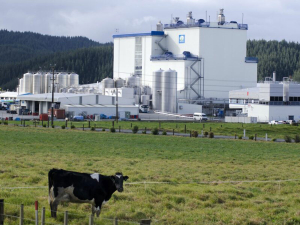While anecdotally there is strong evidence it is succeeding, a Sustainable Farming Fund (SFF) project run by AgResearch for Beef + Lamb New Zealand is now gathering more detailed data to accurately assess the beetle’s work.
Recently BLNZ held a field day on a farm near Taihape to explain the nature of this biocontrol agent and to discuss ways to control Californian thistle.
Dr Graeme Bourdôt of AgResearch says the Californian thistle, during its seasonal peak, covers 12% and 6% of grazed land on sheep and sheep/beef farms, respectively, resulting in an annual national revenue loss of $233m. This loss increases to $685m/year when dairy and deer farms are included.
Bourdot says though the thistle produces seeds these are not a major cause of the plant spreading unless they fall on recently cultivated land; it’s the roots that are the real problem.
“In pasture, the Californian thistle spreads almost solely through the creeping root system which regenerates every year. This is determined by how much foliage it produces in a year.
“The more a farmer can reduce the amount of foliage the less overwintering root is produced and the fewer shoots come up the following year. So a farmer on flat land where he can mow and defoliate a couple of times a year can cause the cali thistle population to become pretty much extinct over a three year period.”
Dr Mike Cripps, also from AgResearch, has been involved in the project since 2007 when he helped collect the green thistle beetles in France and Switzerland as part of his PhD studies.
The actual process began in the early 2000’s when Landcare Research applied for and later obtained permission from the Environmental Risk Management Authority (ERMA) to bring the tiny beetle into New Zealand.
Cripps says it’s been one of the most successful biological control agents to deal with Californian thistle in New Zealand.
“In the winter the adult beetle lives in hedgerows or forest margins and emerges in springtime around October and starts laying eggs. It lays its eggs on the underside of the leaf of the thistle and the larvae hatch and start feeding on the leaf. It pupates around January so there is just one generation per year but it’s important to note that both the larvae and the beetle attack the Californian thistle.”
Cripps says the beetle mainly attacks Californian thistle but has also been known to feed on other species such as the winged thistle. He says it hasn’t been hard to get colonies of the beetle established but he concedes that getting sufficient numbers to build up can be a challenge and this depends on environmental conditions. Pastures that are heavily grazed can cause a reduction in the number of green thistle beetles.
The other problem can be mowing Californian thistles, which is a common way of dealing the problem.
“Potentially you could do both if you timed the mowing operations correctly – such as late summer or early autumn when the beetles have stopped feeding.”
Cripps says at least 50 and ideally 100 beetles are needed to establish an effective colony to deal with Californian thistle. One aim of the SFF project is to better understand how defoliation by the beetle relates to thistle population decline. Once they have this information he and his fellow scientists will be better able to help farmers. These trials are taking place in North Canterbury which is close to his base at Lincoln.
Cripps is positive and excited about the project, but he acknowledges that bio-control agents such as the green thistle beetle will never eradicate a pest and are probably better suited to remote hill country locations, hence the trial on sheep and beef farms.



















